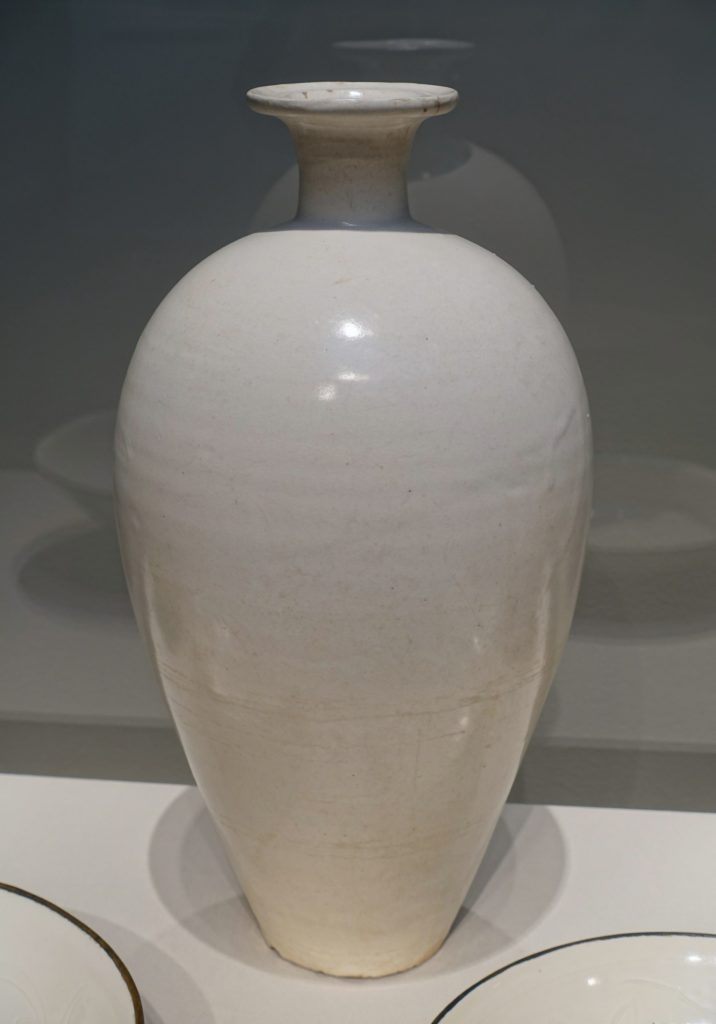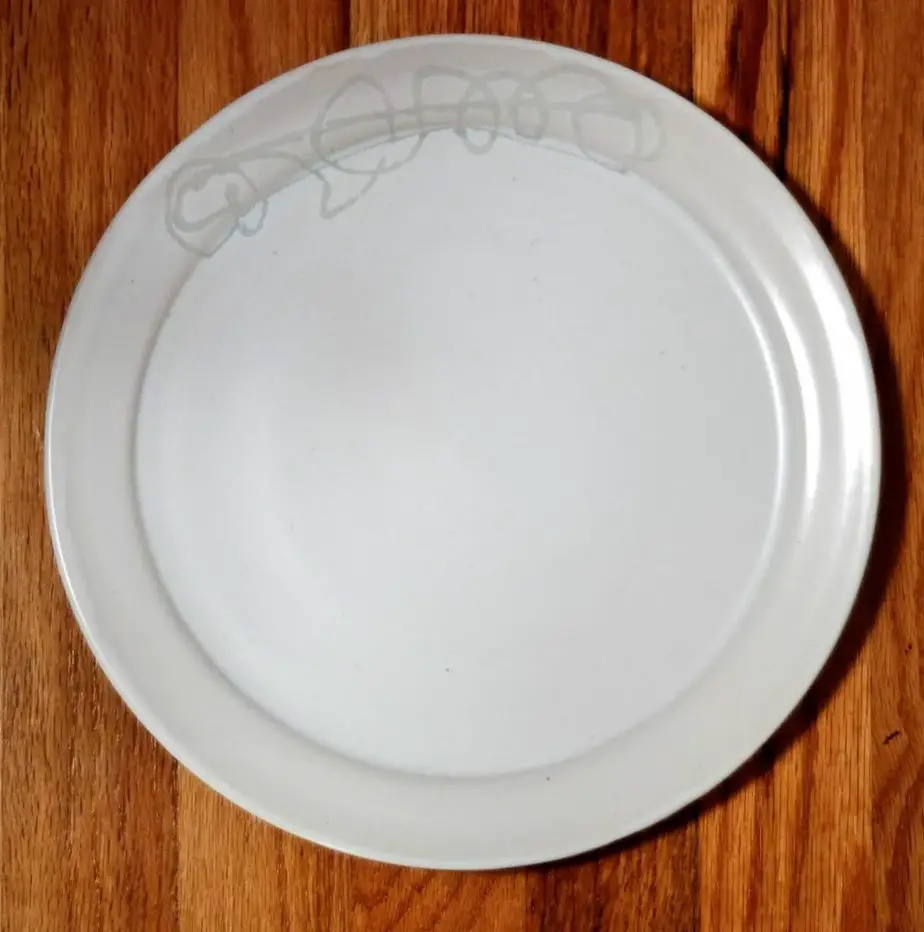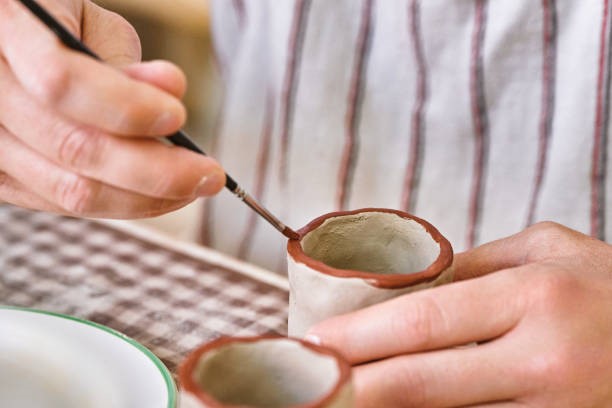You may wonder how you can get a pretty white pottery piece. While you can do it with porcelain clay, a white glaze is actually a wonderful alternative.
But, how do you get that type of glaze? These white glaze pottery pieces should do the trick!
In this, we’ll give you some benefits of white glazes on pottery, and some white glaze pottery recipes that you can try with your next project!

Why a White Glaze?
Why should you choose a white glaze? Well, white glazes have a few added benefits, and they are as follows:
- They are typically high-fire glazes, so you can use these for food and drink
- They look pretty
- They can give an opaque look to your pottery
- Lots of white glazes will emulate traditional pottery means without doing them, such as Raku, or Marjolica
- They often feel really smooth on the pottery
White pottery glaze is often overlooked compared to others because people think white is “boring.” But, white pottery glaze can be anything but boring if you know what you’re doing and can create the best glaze that you can with this.
Glazing with one Key Ingredient: EPK
In most white-glaze recipes, you will see an ingredient called EPK. This is a clay that’s used in pottery, especially white pottery, and it creates the following properties in your pottery when used as a glaze:
- Amazing suspension
- Capabilities not seen with other pottery
- A beautiful white-fired color
- A very strong and fortified piece
- A very clean piece
In many formulas, you’ll see this, and it definitely is quite useful. It does need to be fired incredibly high, so it’ll probably be used in cone 8-10 glazes or higher, so remember that when you’re using this.
Ferguson’s White Crackle Glaze
Do you want to create a raku crackle look in your pottery? Why not try this white crackle glaze?
This one contains the following ingredients within it
- 65% Gerstley borate
- 5 % Tennessee ball clay
- 5 % silica
- 15% nepheline syenite
- 10% tin oxide
This glaze works best with stoneware for the most part. You will, however, need to keep this in mind:
- If you’re using it for Raku firing, do know that the thermal process may benefit from a white terra sig added to the clay
- Make sure you get a stoneware clay that can crackle
- Keep the firing around cone 4 for best results
- You can’t use these for functional ware, due to the fact that crackle glaze usually makes the piece unusable
- You may notice that it is bubbling during the firing process, and that is normal
This is a great one if you’re looking to add the crackle sensation to the glaze, and it can add a nice little touch to the decorative piece too.
Traditional White Glaze Recipe

Do you want just a normal, high-firing white glaze recipe? Well, look no further, for this one is great for it.
This recipe involves the following characteristics, and you’ll obtain this when you fire the piece using this:
- A satin matte texture
- A white color
- It’s best fired in an oxidation/neutral reduction chamber
- It needs to be fired to cone 6 for the best results
So, it’s ideal for stoneware, and occasionally some porcelain as well.
The ingredients for this are the following:
- 8.6% zinc oxide
- 15.4% EPK
- 5.6% silica
- 18.8% whiting
- 51.6 feldspar
At this point, you can probably take all of this, mix it together, and from there, you’ll be able to have a wonderful white glaze that looks amazing when high-fired.
Super High Fire White Glaze

The following properties are included in this glaze:
This is a very high-fired white glaze that you can use. It does need to be fired at high temperatures, for porcelain is the way to go with this.
- It needs to be fired to cone 10
- It needs an oxidation/neutral reduction atmosphere
- It has a matte finish
This one type is used for more functional porcelain than just decorative ones since it typically looks more matte than the usual pieces.
The ingredients for this, for the most part, are simple, and they include the following:
- 37.5% silica
- 37.5% soda feldspar
- 25% Whiting
There are also a couple of additions that you can add to that, and they are:
- 8% titanium dioxide
- 13% zinc oxide
Of course, this does make the parts over 100, but it’s not too much of a problem for the most part, especially if you know what you’re doing.
This one does need to be fired in a wood-burning kiln for best results, and it does take a long time to fire to that temperature. But, if you want a white glaze that sticks around, and it high-fires very easily, this is the best glaze out there for the job!
White Slip Glaze
Do you want to add a slip glaze to your pottery recipe? Then look no further, for this is the best recipe for this.
It does have the following properties added to this, including the following:
- Fires at cones 4-10
- Fires ideally in an oxidation or reduction atmosphere
- Creates a white satin-matte finish to it
This is a great one if you’re looking to add a white slip texture to your pottery and to make it really stand out.
To do this, you need to put the following together in a recipe:
- Custer feldspar 25%
- OM4 ball clay 25%
- EPK kaolin 25%
- Silica 25%
- Zircopax 5%
At this point, you can just mix it all together, and from there, you apply this to clay that is bone dry, and then fired for the best results. It creates a unique, and interesting texture to your clay that you may otherwise not get to play around with.
Naragon White Cone 6 Recipe
This is another high-fire glaze that creates a surface with the following texture:
- One that is glossy
- One that’s opaque
- One that is high fired
- If you put this over a white clay body, it manages to look even white
So, if you’re going for a pure white recipe with your pottery, this is a great one to utilize.
In this, you add the following together first:
- 26% Gerstley borate
- 31% F-4 feldspar
- 25% silica flint
- 4% dolomite
- 6% whiting
- 8% EPK kaolin
After that, you put the following in there:
- 12% zircopax
- 2% bentonite
At this point, mix all of these together, and then there you go. Make sure that you do take the time to fire this one all the way to cone six, in an oxidation atmosphere, in order to obtain the best results from your pottery through the use of glaze.
White low-fire Alkaline Glaze
What about clay bodies that are low-firing? Trying to use some of these high-fire glazes with a low-fire clay body will cause the following to happen:
- It will make the clay melt
- The glaze won’t set on the pottery
- It won’t create the ceramics that it should be
Remember that the process of turning pottery into ceramics as well, a process, and for those pottery pieces that you want to fire white, but are also low-firing, we have the solution for that.
The best way to do this is to put the following together:
- 7.1% lithium carbonite
- 40.5% Fero frit 3134
- 12.9% whiting
- 21.7% EPK kaolin
- 17.8 Silica (325 mesh for best results)
With this, you will need to mix all of this together and fire to cone 06, so if you wanted to, realistically, you could fire earthenware with this type of glaze, and it will create a white matte look to it.
White Ash Glaze
Lots of people love white ash glaze because this one creates a greenish-white texture to it. It also is pretty decent in terms of firing ranges, and it has the following properties:
- Fires best in a reduced atmosphere
- Has a satin matte look to it
- Is fired at cone 10, so it’s high-firing.
- It can look green in texture but will fire white
- If you apply too much, it will look green, but that is a lot
To make this one, you need to use the following ingredients:
- 31.6% dolomite
- 31.6% OM4 ball clay
- 10.5% nepheline Syenite
- 24.6% mixed unwashed hardwood ash
At this point, you can mix all of this together, but do make sure that you wear gloves when you use this since it is known for staining hands green. Of course, if you’re working with pottery glazes period, this should be a given, but it’s worth mentioning.
White Salt Glaze
For those of us who like salt glazes, this is probably one of the best. It typically has the following properties especially when it’s fired:
- Has a white texture
- Could be opaque in some cases, very clear in other cases
- Goes from a white matte color to a glossy color
- Looks almost like a slip in a sense
- Ideal for stoneware
To make this, you create a white salt glaze, and then apply it first on the piece, and then later on when firing. It should be the following ingredients:
- 4.8% OM4
- 71.6% nepheline syenite
- 23.6% dolomite
- 18% zircopax
- 1.1% light rutile
- 4% bentonite
Again, you apply this first and foremost by adding it directly onto the glaze. But, with the addition of soda firing, you can then add more to it, and this will, in turn, help to craft the prettiest and whitest glazes that you can make.
Snowflake Crackle Glaze
Finally, we have this one, which creates a snowflake look to the pottery in a crackle form. Again, you shouldn’t use this with pottery pieces you actually want to utilize as functional ware, since they are technically toxic.
To make this, you need to add the following to your pottery:
- 4.36% magnesium carbonite
- 6.38% OM-4 Ball clay
- 89.26% nepheline syenite
- In addition, 2% bentonite for the best results
Mix this all together, fire it to con 6-7, and you should notice the pottery start to crack. Again, be careful with this since it can be a bit dangerous to work with this type of pottery.
Cautions for White Pottery Glaze
White pottery glaze has a lot of cautions to it, and different aspects that you should definitely be mindful of.
Some of the cautions that you should consider before you begin this project include the following:
- White glaze fires hot, so the kiln will be very hot
- Make sure to practice proper kiln safety before you fire these
- When mixing, always protect the eyes, mouth, and skin from the harsh chemicals that are in these
- Make sure not to inhale anything containing silica
- If you don’t know how to properly handle the chemicals, research them before you begin
- If you need help, talk to a mentor before you start, since they can help you determine the best ways to go about doing this
When firing white-glaze recipes, more caution should be taken to ensure that you’re using the right glazes for this and that you’re taking the time to improve your pottery as well. White glaze is great for pottery, but it does fire hot, so that should be kept in mind.
These are the best white-glaze recipes that are out there, and they can provide you with the best results that you can get from this. With the right mindset, and the right ideals, you’ll be able to create the best high-fire clays that you can, and some wonderful pieces that you’ll love.








